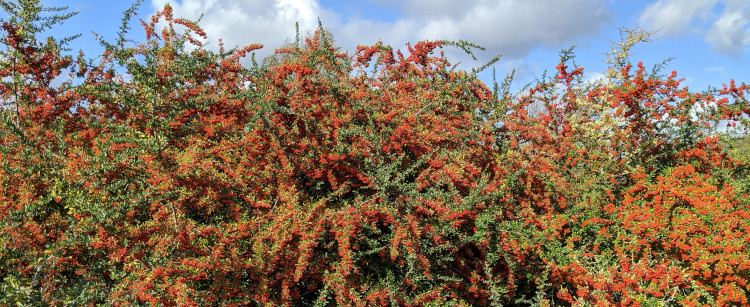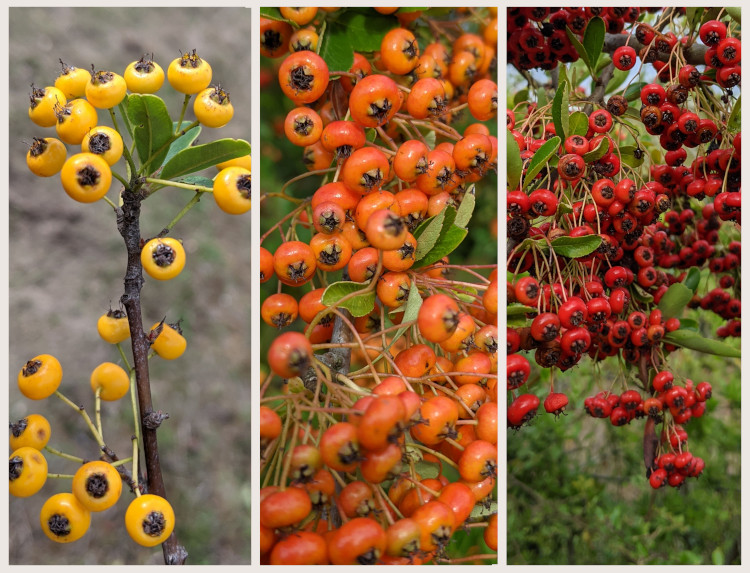23rd October 2021
…and a lesson in Greek.
Only when describing how fiery this shrub is when covered in berries did I realise why the Pyracantha is so called: It is like a ball of fire – ‘pyr’ . I am now proud to confirm, after a quick check on google, that I know a Greek word I didn’t know I knew.
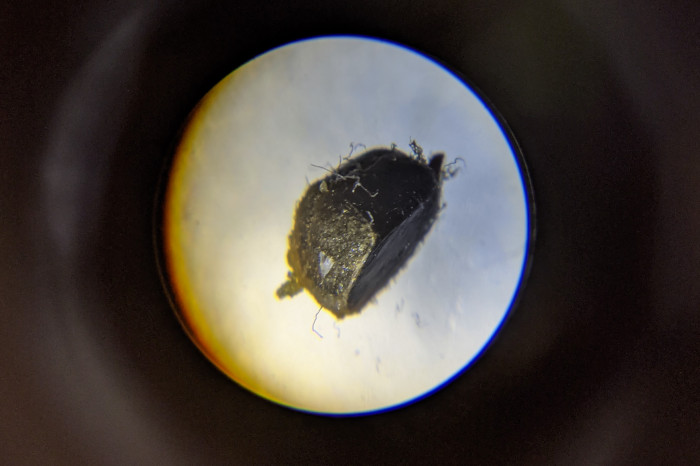
It is difficult not to be captivated by the power of this shrub and its survival techniques. The tiny little berries each have five seeds – small, black and shiny with a hard surface like flint. In summer the bushes are covered in white from the abundance of tiny white flowers. Now, in October, they are fiery explosions of red, orange or yellow. Each berry is tiny yet the overall impact from a bush covered in berries is stunning.
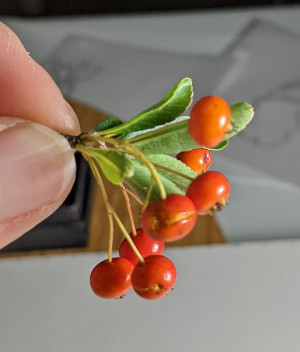
The berries survive on the shrub, presumably, because they are protected by vicious thorns which are cleverly hidden by the leaves. I have never seen leaves forming on thorns before and from what I’ve seen, each thorn has at least three leaves growing on it making it practically invisible ….. and treacherous.
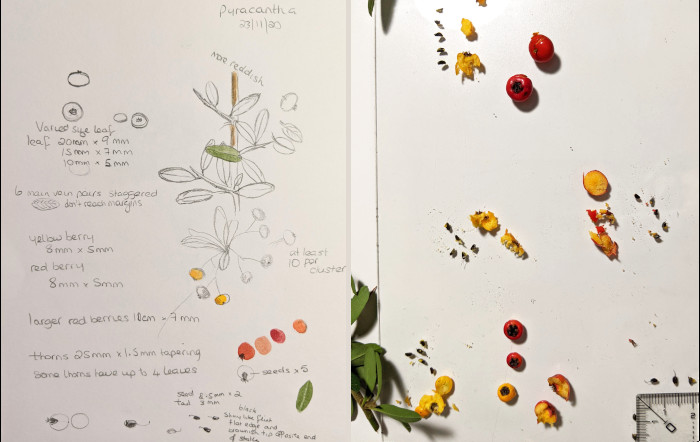
Pyracanthas grow wild and prolifically in the west of Paris and seem to survive almost anywhere they set seed and are completely undisturbed (not surprisingly).
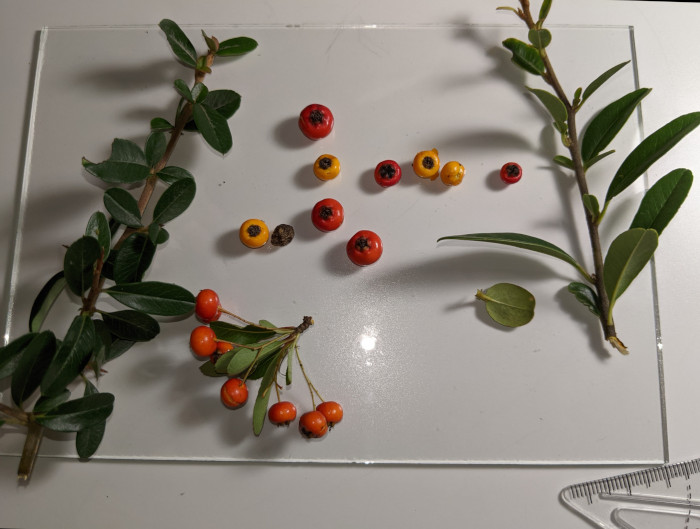
There is one in my own garden – self seeded and uninvited and any attempts to dig, rip or tear it out have failed abysmally. It always comes back – bigger, bolder and more lethal. So it is a permanent feature in a ridiculous position and is completely ungainly in shape. No amount of pruning or preening will create a nice form. It really needs to be left alone in a huge space to allow its branches to spread and bow naturally. However, bees and insects adore the flowers and the birds appear to love the berries and for those reasons it can keep its thorny position in the garden.
If ever I move to the middle of nowhere, I wouldn’t need a wall or fence for privacy or security, I would plant the entire perimeter with these vicious, impenetrable but beautiful, clever and colourful shrubs.
